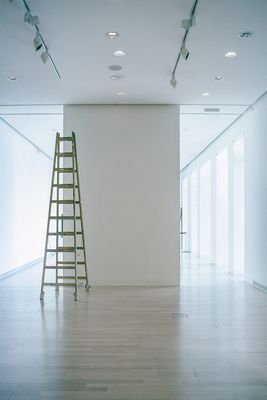
‘What had up till now been a home owner-driven price surge, is once again becoming affected by investors realising that with such strong price growth the time is ripe to get into the market.’ Photograph: Lukas Coch/AAP
‘What had up till now been a home owner-driven price surge, is once again becoming affected by investors realising that with such strong price growth the time is ripe to get into the market.’ Photograph: Lukas Coch/AAP
Last modified on Wed 5 May 2021 18.32 BST
W ith ongoing record low interest rates and government desires to support the market come what may, Australians are taking out home loans in record numbers and as a result house prices look set to keep rising across the country.
If you had any doubt that Australia’s housing market is driven more by governments than actual market forces, you need look no further than the latest housing finance data that shows despite a year in which unemployment soared, and the economy staggered, the number of new mortgages taken out in March was 55% higher than it was in March last year.
It is not often that monthly economic data makes you look agog. But the latest lending finance data reveals just how insane the housing market has become around the nation.
So absurd it is that the value of home loans taken out in Western Australia in March was nearly double the amount taken out in March last year:
Admittedly, in March last year, WA’s housing market was still in the doldrums after the end of the mining boom, but it had yet to feel the impact of the pandemic.
So you would expect some improvement, but nearly 100% growth in a year? Would you expect the value of new home loans in March this year to be greater than ever recorded during the mining boom years when Perth house prices rose to a value almost equal to that in Sydney?
And it is not just WA – all states have seen surges in home loans off the back of stimulus programs such as the homebuilder program or various state first-homebuyer subsidies.
The surge in home loans certainly has been affected by the massive increase of people looking to build a new home with the help of homebuilder grants:
And this has been reflected in the record levels of building approvals in March:
This will drive employment in the construction sector, and it reflects that mostly the increase in building and home-buying has been for owner-occupiers. But in March there was also a big jump in the number of approvals for building apartments and also a very strong increase in home loans approvals for investors:
So what had up till now been a homeowner-driven price surge, is once again becoming affected by investors realising that with such strong price growth the time is ripe to get into the market.
That said, even with the big jump in investor loans, owner-occupiers dominate the market to an extent not seen this century:
But the return of investors is noted by the fact than in March, other than the ACT, the growth of housing finance for investors was stronger in each state than it was for owner-occupiers:
And that is only going to see prices grow to clearly unsustainable levels:
The 43% annual growth in NSW housing finance would historically suggest that Sydney house prices by September will be about 20% above what they were a year earlier – which, if history serves, will see the median price for a house in Sydney reach more than $1.2m.
In Melbourne the price surge is going to be even greater, given the 50% growth in housing finance and the even stronger link between that and house prices than in Sydney:
It would not be a surprise if by September prices in Melbourne are 30% above what they were in September last year – suggesting a median Melbourne house price over $900,000 for the first time ever.
But if you think that is stunning, just look out west where housing finance has jumped by nearly 100% – history suggests these residential prices will surge by nearly 90%.
Absurdly, if that flowed through, it would see the median Perth house price go from $495,000 to over $900,000.
That would seem unlikely – and it is tough to say just how much prices will rise in Perth given there has never been such an increase in home loans – but if it doesn’t happen it will mean a pretty large disconnect between home loans and house prices:
And so we find ourselves coming out of a recession with an extremely strong housing market – so strong that a slackening must surely occur.
But with the Reserve Bank this week again confirming it will not raise the cash rate until wages growth is “materially higher than it is currently” and likely above 3%, the low interest rates that have helped bring about this boom looks set to continue.
And so we wonder just how much further house prices can rise while actual incomes remain subdued.